Discovering rats in your walls can be a homeowner’s nightmare. These destructive pests seek shelter in wall voids filled with cellulose insulation or fiberglass, creating nests and causing damage to your home’s structure and electrical systems. This comprehensive guide will walk you through effective strategies to identify, remove, and prevent rats from infiltrating your walls, ensuring your home remains rodent-free.
Quick Picks: Best Products for Eliminating Rats in Walls
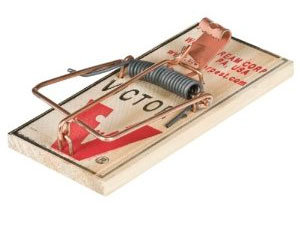
Editor’s Choice
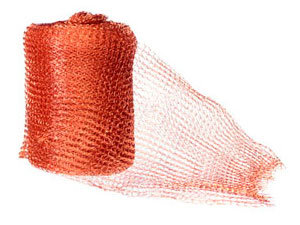
Best for Sealing
Understanding the Rat Problem
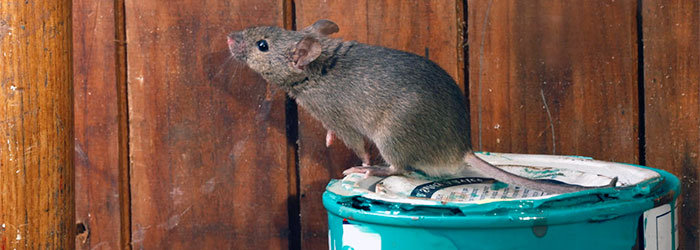
Rats are incredibly adaptable pests that enter homes seeking three essential elements: food, water, and shelter. Your walls provide the perfect protected environment for nesting, while giving them easy access to food sources throughout your home. Before implementing control measures, it’s important to understand the scope of your rat infestation.
Reproduction Rate
Rats can give birth to up to 12 young, four to six times per year, allowing populations to grow rapidly if left unchecked.
Physical Abilities
Rats can jump vertically about 3 feet and horizontally 4-7 feet. They can climb pipes, wires, shrubs, and trees with ease.
Infestation Signs
For each rat spotted at night, there are likely ten more hiding. Seeing rats during daylight indicates a severe infestation.
Signs of Rats in Your Walls
Identifying a rat infestation early is key to successful elimination. Look for these common indicators that rats have taken up residence in your walls:
- Scratching Noises Particularly noticeable at night when rats are most active. Listen for running, scratching, or gnawing sounds inside your walls.
- Dark Grease Marks Rats leave dark marks along walls and baseboards from the oils in their fur as they follow the same pathways repeatedly.
- Gnaw Marks Check for chewed holes in walls, baseboards, and especially around pipes and wires that enter walls.
- Droppings Rat droppings are capsule-shaped and approximately 1/2 to 3/4 inch long, often found near entry points or along baseboards.
- Disturbed Insulation If you can access your attic, look for tunnels or nests in insulation materials.

Rats chewing on electrical wiring pose a significant fire hazard. If you notice flickering lights, unusual electrical behavior, or find chewed wires like those pictured above, address your rat problem immediately to prevent potential house fires.
Step-by-Step Rat Removal Plan
Eliminating rats from your walls requires a comprehensive approach following these three principles: Sanitation, Eviction, and Exclusion. This methodical strategy ensures you not only remove current rats but prevent future infestations.
Step 1: Locate Entry Points
The first crucial step is identifying how rats are accessing your walls. Rats can squeeze through holes as small as a quarter (about 1 inch), making it essential to thoroughly inspect your home’s exterior.
Rat noises can help pinpoint entry locations. Listen carefully at night when rats are most active to identify where scratching and movement sounds are concentrated.
Common rat entry points include:
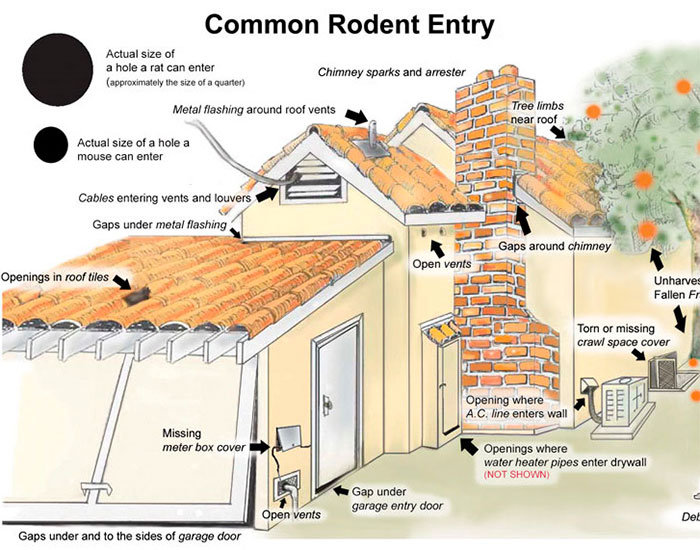
Roof joints and eaves provide easy access
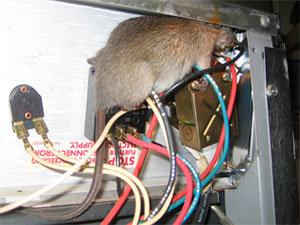
Gaps around utility pipes and wires
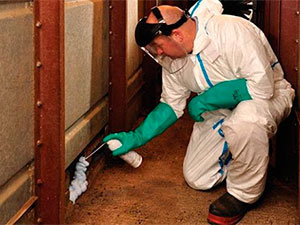
Unsealed exterior wall penetrations
Carefully inspect your home’s foundation, roof line, vents, and areas where utilities enter your home. Look for gnaw marks, droppings, and grease marks that may indicate rat traffic.
Step 2: Seal All Entry Points
Once you’ve identified how rats are entering your walls, it’s time to seal these access points. This step is critical—without proper sealing, new rats will continue to replace those you remove.
Rats need only a quarter-sized hole (approximately 1 inch) to gain entry to your home. Be thorough in your inspection and sealing process to ensure complete exclusion.
Effective sealing materials include:
Copper Mesh Wool
Best for SealingHow Does It Work
How to Use
- Identify all potential entry points around your home
- Stuff copper wool tightly into holes, cracks, and gaps
- Use caulk or expanding foam over the copper wool for a complete seal
- Pay special attention to areas around pipes, vents, and utility lines
- Will not rust like steel wool
- Rats and mice cannot chew through it
- Long-lasting protection
- Easy to install in irregular-shaped openings
- Works well in combination with caulk or expanding foam
- More expensive than steel wool alternatives
- Can be difficult to handle without gloves (small fibers may irritate skin)
- Not suitable as a standalone solution for large gaps
For a comprehensive sealing approach, you’ll need these additional materials:
- Expanding Foam Sealant: Perfect for filling larger gaps and irregular spaces. Look for rodent-resistant formulations.
- Metal Flashing: Use sheet metal to cover large holes or areas prone to gnawing.
- Hardware Cloth: 1/4-inch mesh hardware cloth works well for covering vents and other necessary openings.
- Caulking: Silicone-based caulk is excellent for sealing smaller cracks and gaps.
- Cement: For foundation cracks and exterior holes, use cement or mortar to create a durable seal.
When sealing entry points, leave one or two known active entries unsealed until after you’ve trapped the rats inside. This prevents rats from creating new exit holes in desperation, potentially causing more damage.
Step 3: Trap and Remove Rats
With entry points identified and most of them sealed, it’s time to remove the rats already living in your walls. Since you can’t place traps directly inside closed walls, you’ll need to trap rats at their entry/exit points or in areas they frequent.
Victor Power-Kill Rat Traps
Editor's ChoiceHow Does It Work
How to Use
- Place traps perpendicular to walls with the trigger end facing the wall
- Bait with high-protein foods like peanut butter or bacon
- Position traps near suspected entry/exit points and along rat runways
- Check traps daily and reset as needed
- Wear gloves when handling traps to avoid transferring human scent
- Powerful, effective kill mechanism
- Hands-free disposal design
- Reusable for multiple catches
- No chemicals or poisons involved
- More humane than glue traps
- Requires careful placement to be effective
- May be triggered by vibrations in high-traffic areas
- Not suitable for homes with pets or children unless placed in inaccessible areas
Effective Rat Trapping Tips
- Place traps perpendicular to walls with the trigger end facing the wall
- Use high-protein baits like peanut butter, bacon, or dried fruit
- “Pre-bait” traps by leaving them unset with bait for a few days to reduce trap shyness
- Use many traps simultaneously – at least 6-12 for a typical home infestation
- Check and reset traps daily, wearing gloves when handling
- Focus on attics, crawl spaces, and near identified entry points
While poison baits may seem convenient, they can lead to rats dying inside walls, creating odor problems and attracting secondary pests. Additionally, poisoned rats may be consumed by pets or wildlife, causing unintended harm. Trapping is generally the safer and more effective approach.
Dealing with Dead Rats in Walls
Despite your best efforts, you may encounter the unpleasant situation of a rat dying inside your wall cavity. Dead rats create a distinct, putrid odor that can persist for weeks depending on the size of the rat, temperature, humidity, and airflow.
How to Locate a Dead Rat in Your Wall
When confronted with the unmistakable smell of a decomposing rat, follow these steps to locate the source:
- Follow Your Nose: The smell will be strongest near the location of the dead rat. Move methodically through your home to identify where the odor is most concentrated.
- Use a Flashlight: In darker areas, use a flashlight against the wall to potentially see shadows or outlines of the dead rodent.
- Check for Flies: Clusters of flies around a particular wall section often indicate a dead animal nearby.
- Consider Recent Activity: Dead rats are often found near previously active areas or where you recently set traps or used rodenticides.
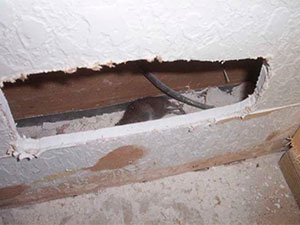
Once you’ve pinpointed the location, you have two options:
- Professional Removal: A pest control professional can locate and remove the dead rat, though this service can be costly.
- DIY Removal: If you’re comfortable with minor home repairs, you can cut a small access hole in the drywall to remove the rat yourself. Be sure to wear protective equipment, including gloves and a mask.
If you need to cut into drywall, use a drywall saw to cut a neat, square hole. After removing the dead rat, the same piece of drywall can be replaced, taped, mudded, and painted, minimizing repair costs.
Eliminating Dead Rat Odors
If removing the dead rat isn’t feasible, or if odors persist after removal, you’ll need to neutralize the smell.
For thorough odor elimination, consider these additional steps:
- Activated Charcoal or Baking Soda: Place bowls of these natural odor absorbers near the affected area.
- Air Purifiers: HEPA filters with activated carbon can help remove odor particles from the air.
- Ventilation: Increase airflow with fans and open windows to help dissipate odors faster.
- Enzymatic Cleaners: After removal, clean the affected area with enzymatic cleaners designed to break down organic matter.
Once you’ve removed a dead rat, thoroughly disinfect the area to eliminate any harmful bacteria, parasites, or diseases left behind. A hospital-grade disinfectant will ensure the area is properly sanitized.
Preventing Future Rat Infestations
After successfully removing rats from your walls, implement these preventative measures to ensure they don’t return:
Eliminate Food Sources
- Store Food Properly Keep all food, including pet food, in airtight glass or metal containers. Rats can chew through plastic.
- Clean Regularly Wipe down counters, sweep floors, and clean under appliances frequently to remove crumbs and food residue.
- Manage Outdoor Attractions Keep garbage in sealed containers, pick up fallen fruit from trees, and avoid leaving pet food outside overnight.
Reduce Harborage Areas
- Maintain Landscaping Trim vegetation away from your home’s exterior, keeping a 2-foot plant-free zone around the foundation.
- Remove Clutter Eliminate piles of lumber, debris, or other materials that could provide shelter for rats.
- Secure Storage Areas Keep garages, sheds, and basements organized and clutter-free to minimize hiding spots.
Regular Maintenance and Inspection
- Seasonal Checks Inspect your home’s exterior quarterly, paying special attention to areas previously sealed against rats.
- Roof Maintenance Check roof joints, eaves, and attic vents annually for signs of damage or entry.
- Professional Inspection Consider an annual pest inspection by professionals who may spot vulnerabilities you’ve missed.
Some homeowners report success with natural rat deterrents like peppermint oil, used cat litter (if you have cats), or ultrasonic repellers as supplementary prevention methods. While these shouldn’t replace proper exclusion techniques, they may provide an additional layer of protection.
When to Call Professional Pest Control
While many rat infestations can be handled with DIY methods, some situations warrant professional intervention:
- Severe Infestations: If you’re seeing multiple rats during daylight hours or hearing extensive activity in walls
- Failed DIY Attempts: If your efforts haven’t reduced rat activity after 2-3 weeks
- Structural Concerns: When rats have caused significant damage to insulation, wiring, or structural elements
- Health Concerns: If family members have respiratory issues that could be exacerbated by rat allergens or pathogens
- Recurring Problems: If rats return despite your best prevention efforts
Professional pest control services offer comprehensive solutions including advanced exclusion techniques, professional-grade trapping systems, and follow-up prevention plans tailored to your specific situation.
Frequently Asked Questions
How long does it take to get rid of rats in walls?
The timeline for eliminating rats in walls typically ranges from 1-3 weeks for minor infestations to 1-2 months for severe cases. Success depends on properly identifying all entry points, effectively sealing them, and using sufficient traps.
Patience and persistence are key, as rats are naturally cautious of new objects (like traps) in their environment and may take time to approach them.
Can rats in walls damage my home?
Yes, rats in walls can cause significant damage to your home. They chew through electrical wiring (creating fire hazards), damage insulation, contaminate areas with urine and feces, and can even gnaw on structural elements and pipes.
Their nesting materials can block ventilation systems, and the organic matter they bring in can attract secondary pests like beetles and flies.
How do I know if the rats in my walls are gone?
Signs that rats have been eliminated include: no sounds of scratching or movement in walls for at least 1-2 weeks, no new droppings or gnaw marks, no more sightings, and no triggered traps for several consecutive days.
You can also place flour or talcum powder near suspected entry points and check for footprints over several days to confirm no activity.
Should I use poison or traps for rats in walls?
Traps are generally recommended over poison for rats in walls. Poison creates a risk of rats dying inside inaccessible wall voids, leading to odor problems and potential health hazards.
Additionally, poisoned rats may be consumed by predators, causing secondary poisoning. Traps provide confirmation of catches and allow for proper disposal.
How long will a dead rat smell in the wall?
The smell from a dead rat in a wall typically lasts 1-3 weeks, depending on the size of the rat, temperature, humidity, and ventilation. Warmer, more humid conditions accelerate decomposition and may intensify the smell initially but reduce the overall duration.
Using odor eliminators can significantly reduce this timeframe, but complete natural decomposition may take 6-8 weeks.
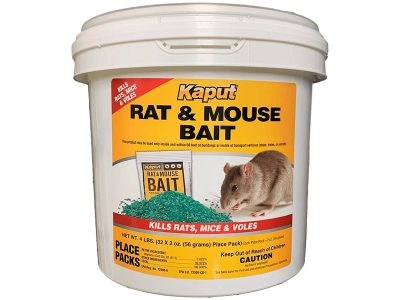
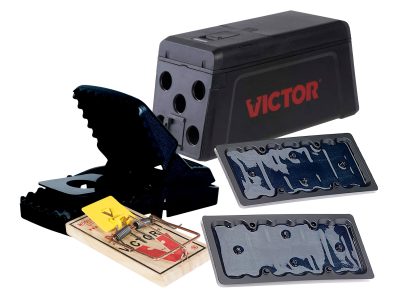
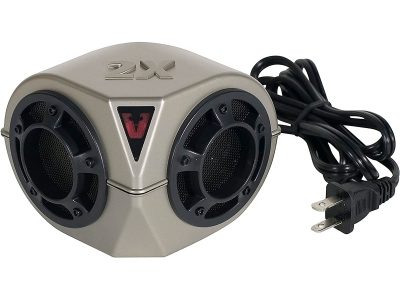

This was better article than the 1000+ articles on line. Gives product information and more tips without too much fluff like how annoying rats are. That’s obvious. My only suggestion would be to add how to get rid of rats in walls if you live in an apartment and have no access to roof attic or crawlspaces. Your apartment may be sealed, but they are still in walls. What does a tenant do? Especially if noises are night mostly and landlord does not live on property. Thanks
I have roof rats in my walls. I caught 3 of them in my garage but haven’t caught anymore since. It seems they are staying away from that area now. I know their entry point but I’m afraid to close it because I haven’t seen any presence of them in my attic. I don’t know what to do. I don’t want to close the entry point then they’re just stuck in the walls chewing everything to get out?
My husband and I tried everything! I went to hardware store bought a hose (plastic) about 2” and affixed it to my tailpipe and the other end to the wall and filled it with CO2 for an hour while I sat in the open garage reading a book. No more activity and horrible smell after a week. We cut out the Sheetrock and found all of them dead in their nest!
I’m planning to do the same thing. These creatures literally keeps awake at night, not because of noise but wondering what they’re up to knowing how smart, restless, and destructive they are. So I bought 6 six CO2 detectors to make sure the air will be clean when I get back in the house. Lord have mercy.
Hi i have a serious roof rat problem I’ve tried many methods that didn’t work I had high hopes with my exclusion tube I made but they mustve found another entry/exit , they are in the walls and attic now . Can’t afford exterminator, been feeling sick lately and I’m never sick , my muscles ache , weakness , just so tired I think I’m sick from the rats 🙁 i don’t know what to do . I’m a Rehabber for wild rabbits and squirrels so I’m sure that has drawn the rats here too . Not sure why I’m writing this u probably don’t read these…. Phx AZ.
Home owner has turned his head and neglects to rid home of a severe rat infestation. I cannot afford to move. I am at a loss. Help!!!
Hello Bernadette, what part of the country are you living, for rat identification. And what type of home are you living in and do you know where they are entering your home?